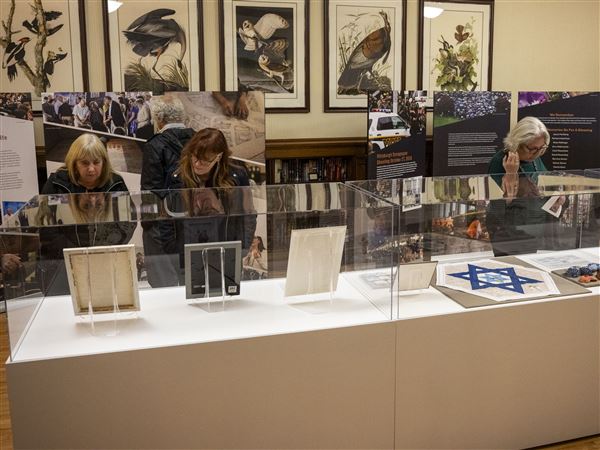Tracy Chevalier has eight popular historical fiction titles to her name, ranging in setting from the 17th-century Netherlands (“Girl With a Pearl Earring”) to mid-19th-century California (“At the Edge of the Orchard”).
But for “New Boy” the fifth entry in the Hogarth Shakespeare remake series, she’s chosen to lend the tragedy of “Othello” a near-contemporary situation and a backdrop much closer to home: her native Washington, D.C.
Hogarth / Random House ($25).
It’s the spring of 1974, and though there’s only one month remaining in the school year, it’s Osei Kokote’s first day. The son of a Ghanaian diplomat posted to the D.C. embassy, Osei is used to moving around; his family has lived everywhere from Rome to New York City.
Osei, who also goes simply by “O,” looks for a fellow person of color amid the “parade of pink-and-cream suburban Americans. But there was none.” He sticks out not just for his skin color but also for his uniform-like outfit and his dignified, well-spoken manner.
Fortunately, he’s immediately taken under the wing of one of the most popular sixth-graders, Daniela Benedetti (known as Dee), and they’re soon inseparable. Rounding out the key “Othello” cast members are Ian, a playground bully, and his reluctant girlfriend, Mimi.
In “Othello” a dropped handkerchief provided Iago’s opportunity to ruin Desdemona’s reputation; here the drama centers on a misplaced strawberry pencil case O swapped with Dee. Ian uses it to fuel O’s suspicion that Dee is two-timing him and thus drive them apart.
The novel takes place all in one day, divided into discrete sections by recess periods and a lunch break. The strict five-act structure and relatively frequent references to other Shakespeare plays emphasize the meta aspect, although not as much as in Margaret Atwood’s “Hag-Seed.”
Dee has a refreshingly innocent curiosity about the exotic: “It was his skin that stood out, its color reminding [her] of bears she’d seen at the zoo.” She also likens O’s head to a clay pot and his hair to a thick forest. In another context those metaphors might induce a cringe, but here they are a clever re-creation of a childlike perspective.
However, the language of possession and desire — “the fire [O] had felt when he first saw [Dee] flared up again” and “since then [Mimi] had felt bound to Ian” — feels overly dramatic here. Such vocabulary might be appropriate to use for high school seniors, but it’s impossible to forget that these are just 11-year-olds.
Jump rope rhymes, jungle gyms, kickball games, arts and crafts, and a typical cafeteria meal of Salisbury steak and tater tots: it’s impressive how Ms. Chevalier takes these ordinary elements and transforms them into symbols of a complex hierarchy and shifting loyalties.
Most remarkable, though, is how the novel explores the psyche of a boy isolated by racial difference. The schoolteachers’ casual racism is breathtaking: “I think I hear drums” and “Given her a taste for chocolate milk?” they joke between themselves.
Little surprise, then, that the children display a similar attitude, as when Ian makes a joke about blacks being good at sports. Teachers and pupils alike express disgust at Dee and O’s budding relationship.
Meanwhile, O ponders the politicized example set by his older sister, Sisi, who has alternately played up her Africanness and her African-American identity — wearing kente cloth and an Afro, or giving Black Power salutes. Between those extremes, he makes a surprising choice.
For all the parallels to the plot of “Othello,” this is an engrossing and ultimately convincing story of its own, with characters you’ll believe in and a tragic ending worthy of the Bard.
Rebecca Foster is an American transplant to England and a full-time freelance editor and writer. She reviews books for a number of print and online publications in the U.S. and U.K.
First Published: May 28, 2017, 4:00 a.m.















